Written by
Michelle McGuire & Jenn Morrissey
2020 was a historic year that majorly changed life as we know it. This year saw a global pandemic, unprecedented levels of racial protests, and increasingly divided American politics. But with the bad, comes the good. 2020 showed us the resilience of communities and the adaptiveness of brands as we optimistically look to the future. This special edition of Spy10 captures the key trends that brands will carry forward into 2021 as we leave this historic year behind.
1. Year of the brand mashup
While partnerships and collaborations have always existed, they’ve typically been formed within the same industry. This wasn’t the case in 2020. Cross-industry brand partnerships increased as unexpected brands came together to create unique products and experiences. While this was seen before 2020, this year only made them more important as brands had to rely on unconventional methods beyond typical in-store activations or events to reach consumers.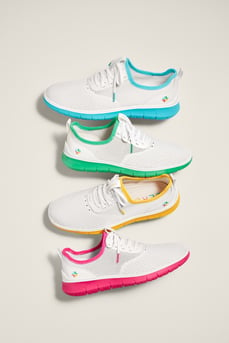 Inspiration: Sneaker culture met Silicon Valley in a collaboration between Cole Haans and Slack. The shoe itself, designed entirely on Slack, combines Cole Haan’s best selling shoe with Slack’s signature bright colors and logos. The brands sought to capitalize on both sneaker culture and the emergence of our new work from home lifestyle. Collaborations don’t have to be limited to just two brands. 2020 also saw Hinge, Chipotle, and Uber Eats combine to offer an at-home date night experience. Users were able to share their burrito obsession on their profiles, order off of a special Chipotle menu with discounts, and have food delivered via Uber Eats.
Inspiration: Sneaker culture met Silicon Valley in a collaboration between Cole Haans and Slack. The shoe itself, designed entirely on Slack, combines Cole Haan’s best selling shoe with Slack’s signature bright colors and logos. The brands sought to capitalize on both sneaker culture and the emergence of our new work from home lifestyle. Collaborations don’t have to be limited to just two brands. 2020 also saw Hinge, Chipotle, and Uber Eats combine to offer an at-home date night experience. Users were able to share their burrito obsession on their profiles, order off of a special Chipotle menu with discounts, and have food delivered via Uber Eats.
Takeaway: As this trend continues into 2021, look to establish strategic partnerships outside your industry. When considering options, weigh if a potential partnership drives value for the consumer and makes sense for your brand.
2. Inclusive design
Inclusive design is all about approaching design in a way that ensures experiences and products can be enjoyed by all regardless of disability or identity. It has been a hot topic for years, but 2020 saw the focus shift in a meaningful way. What used to be mostly an abstract value is finally being put into practice as designers conduct inclusive research, testing, and design thinking. This is a major step for consumers as 15% of the world’s population has some sort of disability which is often excluded from design. On top of this, Gen Z is driving the demand to see a full spectrum of identities represented as they adopt a more fluid view of gender, sexuality, and personal brand. Expect to see this continue into 2021 as inclusive design becomes synonymous with good design in products, communications, services, and more.
Inspiration: Acknowledging furniture design doesn’t take into account everyone’s needs, IKEA launched the ThisAbles project as a way for people to modify furniture for greater accessibility. Thisables are shared free online and can be printed via 3D printers to add onto IKEA’s most popular pieces. Pieces include things like easier handles and switches. Another example of inclusive design in action is genderless retail. Adidas recently opened a gender-neutral store where shoppers navigate products by function, sport, and aesthetic as opposed to the traditional category of gender.
Takeaway:. Inclusivity is non-negotiable for Gen Z and will soon be expected from all brands. Take stock of how your brand can be more inclusive in everything you do and think about ways you can better connect with underserved audiences.
3. Demand for justice
2020 brought systemic racism to the forefront of conversation in America. After the shooting of Jacob Blake, more than three-quarters of Americans reported seeing that systemic racism and racial injustice exist in the US today. And on top of that, they’re demanding brands take action. 80% of Blacks say that brands and corporations must speak out about systemic racism, as do 66% of Latinx and 60% of white Americans. At this historic crossroads, even brands who have previously remained silent have started speaking out and taking action. Expect this to continue into 2021 as the world shifts from systemic oppression to systemic justice. 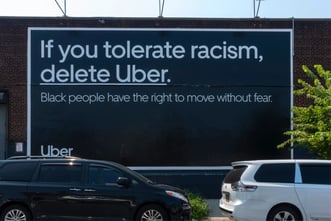 Inspiration: As words without action are dismissed as exploitative, companies are incorporating ways to address systemic racism into the core of their business. Pepsico’s approach focuses on three pillars: people, business, and communities. For people, Pepsico pledged to expand the company’s Black managerial population by 30% by 2025, increase recruitment at HBCUs and mandate company-wide unconscious-bias training. For business, Pepsico plans to double its spending on Black suppliers and invest $50 million to strengthen local Black-owned businesses. For community, Pepsico will invest $20 million over 5 years in different initiatives designed to create opportunity and advance economic empowerment for Black Americans. See how more brands are responding to racial injustice in this AdAge tracker.
Inspiration: As words without action are dismissed as exploitative, companies are incorporating ways to address systemic racism into the core of their business. Pepsico’s approach focuses on three pillars: people, business, and communities. For people, Pepsico pledged to expand the company’s Black managerial population by 30% by 2025, increase recruitment at HBCUs and mandate company-wide unconscious-bias training. For business, Pepsico plans to double its spending on Black suppliers and invest $50 million to strengthen local Black-owned businesses. For community, Pepsico will invest $20 million over 5 years in different initiatives designed to create opportunity and advance economic empowerment for Black Americans. See how more brands are responding to racial injustice in this AdAge tracker.
Takeaway: 2021 will be about standing up for what your brand believes in and taking action. How is your company playing a role in healing a broken system?
4. Earth positive practices
Sustainability as a value is table stakes today. With 8 in 10 consumers indicating sustainability is important for them and 6 in 10 willing to change their shopping habits to reduce environmental impact, expect sustainability to remain a critical conversation in 2021. Brands are becoming more transparent about their sustainability effort, whether committing to carbon labeling (which reveals the true costs of environmental impact) or evolving production practices to actively fight climate change. Inspiration: Annie’s announced it is making its mac and cheese regenerative with the first boxes expected to hit the shelves this month. This means its wheat will be farmed in a way that sequesters carbon and enriches soil, reducing the amount of carbon dioxide in the atmosphere. Regenerative agriculture isn’t the only innovation expected to hit grocery shelves. An organic grocery store in Amsterdam, De Aanzet, has raised its prices to compensate for the environmental and social impact of production and distribution. They partnered with True Price to calculate their new costs, factoring in things like underpaid wages, land use, and water. Their price cards break down these extra costs for consumers to understand. We’ve also played a role in earth positivity here at clarkmcdowall as we created the first climate-positive snack with Bright Future Foods. Read about our journey and what we learned along the way.
Inspiration: Annie’s announced it is making its mac and cheese regenerative with the first boxes expected to hit the shelves this month. This means its wheat will be farmed in a way that sequesters carbon and enriches soil, reducing the amount of carbon dioxide in the atmosphere. Regenerative agriculture isn’t the only innovation expected to hit grocery shelves. An organic grocery store in Amsterdam, De Aanzet, has raised its prices to compensate for the environmental and social impact of production and distribution. They partnered with True Price to calculate their new costs, factoring in things like underpaid wages, land use, and water. Their price cards break down these extra costs for consumers to understand. We’ve also played a role in earth positivity here at clarkmcdowall as we created the first climate-positive snack with Bright Future Foods. Read about our journey and what we learned along the way.
Takeaway: Moving forward, sustainability won’t be about just doing less harm, it’ll be about benefiting the environment as well. How can your brand make better environmental choices in business practices and encourage consumers to do the same in their everyday lives?
5. Plant-based goes mainstream
Dubbed more of a movement now than a trend by the Speciality Food Association, plant-based food is expected to have an annual growth of 10-20% through 2024. Over 50% of consumers are attempting to eat more plant-based foods, listing health, diet variety, sustainability, and taste as their main reasons. No longer restricted to just burgers, expect to see plant-based innovations in snacks, dips, cheese, creamers, and more hitting the shelves next year.  Inspiration: If you’re looking for indication plant-based has gone mainstream, look no further than McDonald’s. McDonald’s is introducing the McPlant burger, their first plant-based burger menu addition in 2021. Their plans don’t stop there with items such as plant-based chicken and breakfast sandwiches in the pipeline. Another innovation in the works is a plant-based milk that tastes like it’s from an actual cow from Impossible Foods. The prototype is still in the works and is expected to launch next year.
Inspiration: If you’re looking for indication plant-based has gone mainstream, look no further than McDonald’s. McDonald’s is introducing the McPlant burger, their first plant-based burger menu addition in 2021. Their plans don’t stop there with items such as plant-based chicken and breakfast sandwiches in the pipeline. Another innovation in the works is a plant-based milk that tastes like it’s from an actual cow from Impossible Foods. The prototype is still in the works and is expected to launch next year.
Takeaway: The plant-based phenomenon shows that something that was previously thought to be impossible can be possible. Take a look at your own industry, question assumptions you make about your products and services, and rethink how to manufacture things or add additional benefits.
6. Functional Food
Expect to see increasingly blurred lines between supplement and grocery aisles as more consumers seek out food with functional ingredients like vitamin C, prebiotics, and adaptogens to support their immune system, boost their mental health, and balance their microbiome. While food as medicine was seen before COVID, the pandemic has accelerated the trend with 60% of global consumers looking for more food and beverages that support immune health and one-third saying they’re more concerned about immune health in 2020 vs 2019. Expect to see more immune-support and stress-management products in demand in 2021. 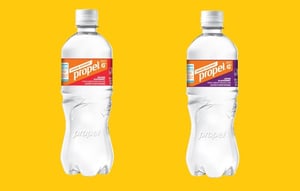 Inspiration: Propel is taking advantage of renewed interest in immune health with a nationwide launch of its Immune Support line expected to hit the shelves in early 2021. The line comes in two flavors, orange raspberry and lemon blackberry, and contains 100% of the recommended Daily Value of vitamin C and at least 30% of the Daily Value of zinc. Beyond this launch, Propel has stated future innovation will continue to focus on functional ingredients.
Inspiration: Propel is taking advantage of renewed interest in immune health with a nationwide launch of its Immune Support line expected to hit the shelves in early 2021. The line comes in two flavors, orange raspberry and lemon blackberry, and contains 100% of the recommended Daily Value of vitamin C and at least 30% of the Daily Value of zinc. Beyond this launch, Propel has stated future innovation will continue to focus on functional ingredients.
Takeaway: Consumers are embracing preventative health and are looking at food labels for claims that signal personal benefits. What is your brand doing to help consumers take proactive steps towards better health?
7. Digitized healthcare
COVID has spurred healthcare innovation in ways that are here to stay as the industry adapted to our new normal.The first major shift was an expansion of telemedicine as the number of consumers using virtual visits rose from 15% to 28% with 80% planning to have another virtual visit even after COVID. Healthcare also saw a boom in AI and VR. The technologies are projected to exceed $34 billion and $2.4 billion respectively within healthcare. As healthcare shifts, people are expecting easier access to expertise, experiences that feel more engaging and consumer-focused, health systems they can use anywhere, and care that is personalized to their specific needs. 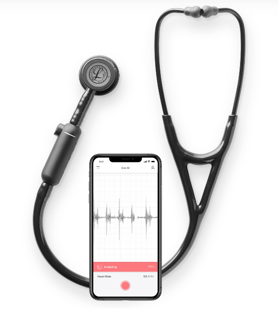 Inspiration: Restricting telehealth to just a video chat is limiting its full potential. Eko has built a platform of sensors and algorithms that can remotely monitor patients’ cardiopulmonary vital signs for detection of heart and lung problems. Boasting an AI more accurate at detecting issues that human physicians, Eko gives both patients and providers insight into heart disease and peace of mind.
Inspiration: Restricting telehealth to just a video chat is limiting its full potential. Eko has built a platform of sensors and algorithms that can remotely monitor patients’ cardiopulmonary vital signs for detection of heart and lung problems. Boasting an AI more accurate at detecting issues that human physicians, Eko gives both patients and providers insight into heart disease and peace of mind.
Takeaway: COVID created a seismic shift within healthcare, prompting quick innovation in technology and tools. Make sure your brand remains future-ready by anticipating possible shifts and leaning into the needs of the next generation of consumers.
8. Wearable health technology
Move over Apple Watches and FitBits, there are new kids on the wearable technology block. Consumer spending on wearable technology is expected to double by 2021 as consumers seek out new ways to monitor their own physical and mental wellbeing. As consumers reduce their visits to gyms and doctors offices, they’re turning to tech for everything from measuring their fitness to tracking their mood. With a full 77% of consumers believing self-monitoring is changing their behavior for the better, expect this trend to stick around.  Inspiration: Amazon announced its first health tracker Halo this year. Halo builds healthier habits by measuring body fat, tracking activity, analyzing sleep, assessing mood via tone, and offering other assessments as well. It’s also screen free for fewer daily distractions.
Inspiration: Amazon announced its first health tracker Halo this year. Halo builds healthier habits by measuring body fat, tracking activity, analyzing sleep, assessing mood via tone, and offering other assessments as well. It’s also screen free for fewer daily distractions.
Takeaway: Consumers are integrating health technology into their lives to stay informed and act proactively. What role can technology play in adding new value to your brand experience?
9. Mental health focus.jpg?width=300&name=anthony-tran-vXymirxr5ac-unsplash%20(1).jpg) 2020 brought with it a skyrocketing interest in mental health as people struggle with isolation, anxiety, and stress brought on by COVID. Nearly half of Americans are more concerned about mental health than ever before with those under 40 the most concerned. As a result, mental health startups have seen record funding as they innovate digital solutions. This is projected to continue into 2021 as people struggle with the ongoing pandemic and the long-term effects afterwards.
2020 brought with it a skyrocketing interest in mental health as people struggle with isolation, anxiety, and stress brought on by COVID. Nearly half of Americans are more concerned about mental health than ever before with those under 40 the most concerned. As a result, mental health startups have seen record funding as they innovate digital solutions. This is projected to continue into 2021 as people struggle with the ongoing pandemic and the long-term effects afterwards.
Inspiration: As people continue to work remote, work/life balance is suffering. Microsoft announced new features for its Teams platform that are designed to improve users’ mental health in the new WFH world. They’re adding a virtual commute feature to create bookends for the day and partnering with mindfulness app Headspace to add an emotional check-in prompting users to select an emoji reflecting how they feel.
Takeaway: You don’t have to be a mental health startup to incorporate mental health into your products and/or services. Moving forward, consider how you can support people’s mental health with shifts in messaging, resources, or add-ons to existing offerings.
10. Powered by 5G
5G is important for more than just telecom companies. In fact, it could be the single greatest technology innovation going into next year as it ushers in a new era of connectivity. Simply put, 5G is the next generation of wireless communication technology that is up to 100 times faster than 4G. It has the potential to create connected ecosystems of devices creating seamless experiences enhanced by AR/VR and AI. For brands this could mean immersive fitting rooms, enhanced multisensory VR/AR, improved manufacturing processes, enhanced voice technology, and more.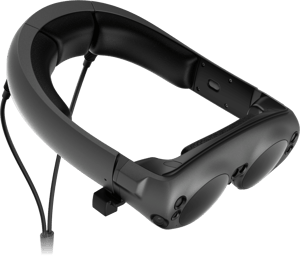 Inspiration: One device that offers a glimpse into the possibilities of 5G is Magic Leap. Magic Leap is an incredibly advanced AR platform that brings together physical and digital worlds through a lightweight wearable computer. Taking advantage of the speed and latency of 5G, Magic Leap offers an Obsess app which allows shoppers to explore retail environments and marchandise in 3D at true-to-life scale.
Inspiration: One device that offers a glimpse into the possibilities of 5G is Magic Leap. Magic Leap is an incredibly advanced AR platform that brings together physical and digital worlds through a lightweight wearable computer. Taking advantage of the speed and latency of 5G, Magic Leap offers an Obsess app which allows shoppers to explore retail environments and marchandise in 3D at true-to-life scale.
Takeaway: 5G means innovations like AI, IoT, AR, and VR can become widespread realities in 2021. Make sure your brand is considering leveraging these technologies in your innovation pipeline and business practices to ensure you’re not left behind in 4G.
Follow us on Linkedin and Subscribe to our newsletter to receive insights and trends in the world of branding.
Sign up for the latest news and views
